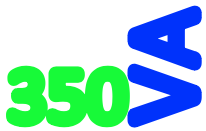
A Cover Letter is your opportunity to get the recruiter’s attention. Recruiters don’t spend more than 15-30 seconds to review it. So, make sure you put yourself into the spotlight in the best possible way.
The Header This section should be similar to the one in your Resume.
Address of The Company Here you write down the address of the company you are applying to. This can easily be found by searching the companies website.
Date Start by writing the month in letters. Don’t use any digits, because some countries start with the date of the month. Finish it with the date and the year in digits.
To Whom It May Concern Find out who the recruiter or the Chief Pilot is. This will make a good first impression. If you are unable to find the specific name, then you can write “to whom it may concern” or “Dear sir, madam,”. This is the most respectful way to begin a letter.
The Sentence Inform the recruiter why you believe that you are the perfect candidate for the job. Let them know how your knowledge and experience will meet their expectations, and write it in a way that highlights your knowledge about the company.
The Ending Finish the cover Letter as you would any formal letter. Don’t forget to sign you Cover Letter at the bottom of the page.

A catching Resume is the key to getting an interview. Recruiters usually don’t spend much time viewing your resume. A resume is the summary of your experience and qualifications and should only be 1 page long. Make sure that the information a recruiter is looking for, is retrievable within the blink of an eye.
In the header section you should provide your full name, phone number, address, e-mail and a professional photo of yourself.
Break down your flight time and clearly indicate your total flight time on the top of this section. Make sure that the column with your hours are nicely aligned. It’s not at all recommended to write down specific flight times such as solo time, a total of landings or dual received. If you are applying for a company that is looking for a specific type of aircraft they are operating, then write down the total time you have flown on that aircraft.
List the certificates and ratings that are relevant to the job you are applying for. An example may be JAR-FCL ATPL, or FAA ATP. Also include type ratings issued on your license. Make sure that the requirements listed by the airline are mentioned in your qualifications section.
List all your previous work experience as a pilot. The key is to keep it short and easy to read. Don’t be too specific in this section and refrain from including non-flying work experience.If you have no experience in aviation and this is your first application to an airline, then just write down your last work experience.
List the highest education level you have achieved. If you have any college degrees, list all the degrees obtained and universities you attended. The recruiter is not interested in information about your high school education, or specific classes you attended.
Inform the recruiter about yourself, your marital status as well as the passport you hold, what your personal interests are and what you like to do in your free time.
References is optional and I recommend you only list it if you have space to spare. List two to three individuals that are related to aviation, for instance a Chief Pilot or a Flight Instructor. List their e-mail address as well as their phone numbers, in case the airline wants to contact them.

